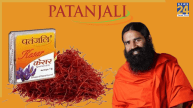In recent times, people are becoming overtly conscious of their overall health and well-being. To this end, they are exploring all possible channels that may lead to good health. Ayurveda, being one of them, is considered as one of the most ancient systems of medicine is well accepted by everyone around the world. It is an ancient Indian medical system that has been in use for thousands of years with the aim of creating a perfect balance between body, mind and spirit.
History of Ayurveda
The history of Ayurveda dates back to as far as 2nd Century BC. The ancient school of teaching, Vaisheshika and Nyaya laid the foundations of Ayurveda. Some bracket it with Samkhya – the manifestation framework. Ayurveda, according to some schools of thought, believe it is an Upaveda of Atharva Veda or Rigveda while some consider it to be an Upanga of Atharva Veda. It is a divine form of healing passed on from the gods to the common man though the sages.
The Quintessence of Ayurveda
The central key of Ayurveda revolves around the five elements of nature namely air, space, fire, earth and water. These elements of Nature are found everywhere including the human body. Finally they combine to form the three doshas or energies which are vata (space and air), pitta (fire and water) and kapha (water and earth) each with its unique features, characteristics, qualities and functions. All these govern human health physically, emotionally and mentally.
Treatment Approaches
Taking into health considerations of each individual, practitioners of Ayurveda prescribe treatment approaches unique to each individual. However, the key techniques used in Ayurveda include herbal medicines, yoga, meditation, purification schemes and counselling. Alternatively Ayurveda uses methods like breathing exercises, oil massages and repetition of certain mantras. Adhering to a strict diet is also part of Ayurvedic treatment. Ayurveda works in close association with yoga where various asanas together with herbal remedies can work magic on human bodies. Aromatherapy is believed to be an offshoot of Ayurveda.
Watch Ayurvedic Treatment
Ayurveda Diagnosis
There are numerous methodologies of diagnosis in Ayurveda. Here are some of the most common diagnosis methods applied by Ayurveda:
- Pulse diagnosis
- Iris diagnosis
- Tongue diagnosis
- Body constitution observations
- Questioning
- Palpation and physical assessment
- Diet and lifestyle examination
- Face reading
Modern Ayurveda and Global Impact
Over the years, Ayurveda has gradually gained importance in modern man’s lifestyle. It has gained popularity because of its scientific credentials. In the 21st century, Ayurveda gained prominence in the Western world, which till then was totally deprived of all the benefits of this discipline of medicine and treatment. It has gained a global appreciation in recent times. With strong scientific research and evidence to go by it, Ayurveda has gained a new lease of life.
Conclusion
With doubts dispelled about the benefits of Ayurveda, it has stood the test of time by being accepted by the global community. Hence, its integration with modern medical science can be justified. With almost 4000 herbs and minerals used in Ayurveda, it has now become an integral part of humanity.













